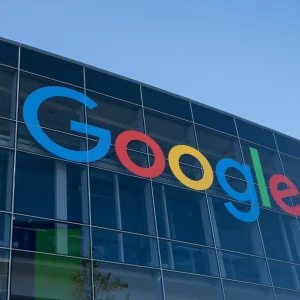
The value of data grows when it is shared and intermingled, but businesses often hoard their data as though it were a finite resource. Some governments are mulling ways to encourage more business-to-business (b2b) data sharing, most notably the EU, which has two regulatory measures in the works. Such data sharing will require new systems and institutions, and a bewildering array of models and methods are in development. But many of these are technical solutions to a socio-economic problem: that few companies yet see the value in sharing their data beyond their organisational boundaries.

With the EU’s implicit backing, data spaces are arguably the front-runner among many emerging models of b2b data sharing. (Image by sripfoto / Shutterstock)
Why governments are encouraging b2b data sharing
The new oil; the new gold; the new capital – analogies for the value of data abound, but none can truly capture its economic attributes because they are unique. “Data is non-rival,” a 2020 report by Cambridge University’s Bennett Institute for Public Policy notes. “Many people can use the same data at the same time without it being used up.” While ‘negative externalities’ such as privacy infringement can occur when data is collected or used, the report notes, “positive externalities happen when one dataset is enhanced through being combined with others”.
Despite this – and the ample availability of data-sharing technologies – few businesses seek to increase the value of their data by pooling it with other organisations. Only 39% of European businesses surveyed by Spanish consultancy Everis in a study for the European Commission share data with other businesses. The chief barriers for those who do not are privacy concerns and a fear that trade secrets will be lost, the survey found.
Now, policymakers are examining ways to unlock the latent value in data that could be shared. The EU's data strategy aims to create "incentives for data sharing [and establish] practical, fair and clear rules on data access and use". Not one but two policy measures that seek to encourage b2b data sharing – the Data Governance Act and the Data Act – are working their way through the European legislative process.
The UK's data strategy, meanwhile, notes that "there is increasing evidence suggesting that the full value of data is not being realised in the economy and that government intervention is necessary to address specific market failures in this area", although it falls short of committing to any such interventions.
But prodding from the government will not be enough to enable businesses to share data safely. Technical and institutional measures are needed to reassure companies that they can control access to the data they share and to maximise the value that is generated. "The government has long recognised that new models and approaches are needed to drive value from data and data systems that span the private and public sector," the UK data strategy reads. From 'data spaces' to 'data safe havens', many such approaches are in development – so many, in fact, that the abundance of options could hinder uptake.
What are data spaces?
'Data spaces' are arguably the most high-profile b2b data sharing mechanism in development. This is because the EU's Data Governance Act proposes to create them for crucial sectors including health, energy, and agriculture. "Common European data spaces will ensure that more data becomes available for use in the economy and society, while keeping the companies and individuals who generate the data in control," according to the European Commission.
The concept of 'data spaces' was developed by Germany's influential industrial research body, the Fraunhofer Institute. It describes an assemblage of technical specifications, standards and governance mechanisms that allow organisations to share data without the need for a central data store – something akin to a decentralised, cross-organisational data lake. The International Data Spaces Association (IDSA), a non-profit coalition with 130 member organisations, has published a reference architecture model and an API specification for data spaces.
The data space framework has three facets that encourage data sharing, says Sebastien Steinbuss, CTO of the IDSA. The first is data accessibility: data is described using semantic web technology and shared standards, meaning it can be found by external parties and is interoperable. The second is an identity layer that authenticates participants, whether they are data producers, users or intermediary service providers. And thirdly, a governance layer determines who can access which data and for what purposes, ensuring, for example, that a company's competitors cannot access the data it shares with partners.
The "low-hanging fruit" for data spaces is sharing operational data among partners, says Steinbuss. He points to the example of the manufacture and maintenance of aircraft. "An aeroplane is built in one country but then flies all around the world," he says. Some data about an aircraft is held by the manufacturer, some by the operator, and still other data by its owner, and sharing that data would make maintenance more effective.
But data spaces would also create additional value by enabling new business models, Steinbuss says. Users of a particular kind of industrial machinery could make operational data available to third parties, who could, in turn, develop new predictive maintenance algorithms. "That is a benefit to all parties because customers get better predictive maintenance and the creator of the machine gets a new service," he explains. This could be a more enticing driver: the Everis survey found that the possibility of new products, services or business models was the most common motivation among companies that share data.
German steelmaker Thyssenkrup was an early adopter – in 2016, it created a data space to foster sharing among its submarine manufacturing ecosystem, but the project was scrapped following commercial issues at the company, Steinbuss says. More recently, carmakers Mercedez-Benz and BMW, alongside a number of their suppliers, have created a data-sharing coalition called Catena-X, which will use the IDSA framework. Other examples of data spaces include the Smart Connected Supplier Network, a Dutch initiative to encourage data sharing along the high-tech equipment manufacturing supply chain.
As yet, though, there are no data spaces with the international and industry-spanning scope that the European Commission envisions. But the EU's implicit endorsement makes them a strong contender to be the dominant model of b2b data sharing, at least in Europe.
Alternative b2b data sharing institutions
There are plenty of other models in development, however. Another European initiative, named 'TRUSTS - Trusted Secure Data Sharing Space' aims to encourage b2b data sharing by establishing a marketplace for data exchange. "The TRUSTS platform will act independently and as a platform federator, taking into account the legal and ethical aspects that apply on the entire data [value] chain, from data providers to consumers," according to the project's website. Three use cases are in development – anti-money laundering; digital advertising; and customer service.
Some approaches derive from the healthcare space, where the need to share research data while preserving patient privacy demands technical and institutional innovation. These could be repurposed to allow businesses to share insights from their data without sharing the data itself, says Jack Hardinges, programme lead for data institutions at the UK's Open Data Institute.
One example is Open Safely, a software platform for analysing electronic health care records, which is developed by a project co-led by UK writer and physician Ben Goldacre. The platform allows researchers to conduct queries across health records held across various institutions without directly accessing them. Another is MELLODY (Machine Learning Ledger Orchestration for Drug Discovery), which allows researchers to apply machine learning algorithms to the drug research datasets of ten pharmaceutical companies, again without the need for direct access.
Also emerging from the research field is the concept of 'Data Safe Havens', developed by the UK's Alan Turing Institute. These are cloud-based data repositories that manage data access according to five tiers of sensitivity, ranging from open data to 'very sensitive personal, commercial or government data'.
UK non-profit Icebreaker One, meanwhile, aims to improve data sharing in the energy sector in order to help achieve net-zero carbon emissions. To achieve this, it proposes a federated approach to data sharing, "namely that the data is not centrally stored, it is left with the data owner or controller and consent managed to allow those with permissions to access with conditional rules that have been agreed by the market".
Non-technical barriers to b2b data sharing
This variety of data sharing mechanisms on offer may prove to be a hindrance, Hardinges believes. "It's a complex space, sometimes made more complicated than it needs to be by some of these different approaches," he says. "If you are an organisation that wants to share data with counterparts within your domain, where do you start?"
"It's a complex space, sometimes made more complicated than it needs to be by some of these different approaches."
Jack Hardinges, Open Data Institute
Another issue is that many of these approaches are technical solutions to what Hardinges describes as an "economic and socio-political issue". "I think some of the barriers will be aligning incentives so that groups of organisations will come together and [share data]," he says. "Having some technical infrastructure to do it might not really get to the nub of why.”
Steinbuss agrees that one of the chief barriers to b2b data sharing is a matter of mindset. "A lot of people go out in the morning for a run, record their route via an app, and then share it on Facebook. But when then they get to work they say, 'I'm sorry, I can't share this data with you'. This is a mindset issue."
Hardinges believes the ODI's concept of 'data stewardship' could encourage organisations to enable the 'positive externalities' of their data. "Over the past ten years, organisations have been fairly good at data governance in the sense of keeping data secure," he says. "What we haven't seen is the other side of the coin, which we think is also important: maximizing the public good and the potential public benefit of that data that you hold. The idea of 'data stewardship' acknowledges both the need to protect data and open up its value."






